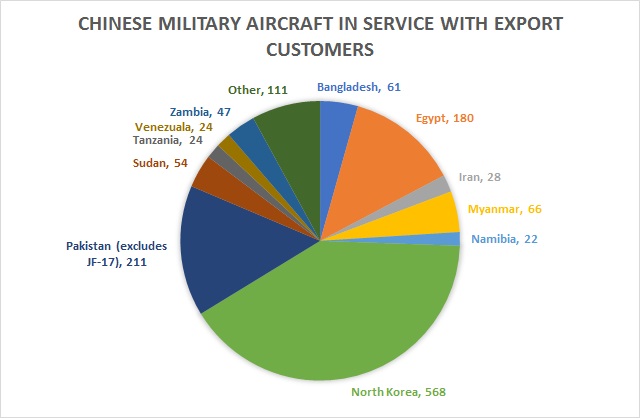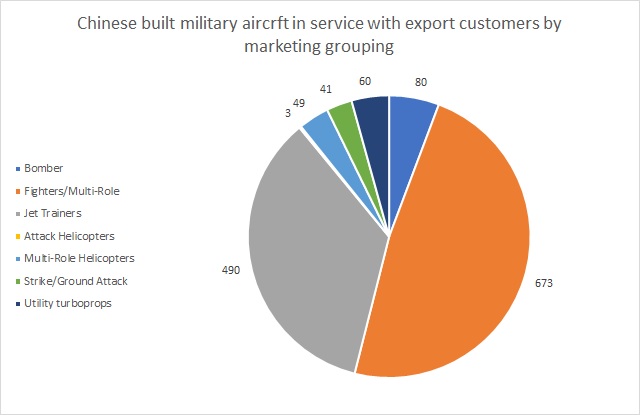On the second day of the 2015 Dubai Air Show, reporters crowded into the Avic chalet. Expectations were high: a sign outside a day earlier had proclaimed there would be a briefing on the CAIC WZ-10 attack helicopter. Minutes passed while Avic officials avoided eye contact. The time set for the briefing came and went. Inquiries to the reticent officials evinced no more than a brusque shrug. Half an hour after they arrived, reporters departed in frustration. It turned out that the decision to hold a media briefing on the helicopter had been countermanded – although nobody wanted to say this outright.
Such is the secrecy-shrouded world of China's military aircraft exports. While Avic and Catic signal, with large presences at international air shows, that they are eager to market Chinese military aircraft abroad, their reticence about saying too much is clear. This is despite the significant benefits that can derive from exporting defence equipment.
Get all the coverage from the Paris air show
Irrespective of Chinese defence firms' inept handling of international media, aircraft numbers tell a different story, with a vast fleet of Chinese military aircraft in service with more than a dozen air forces. These are not the sorts of countries Western airframers give much thought to, but China's aerospace export achievements over the past half century have been impressive.
Flight Fleets Analyzer shows that there are 1,396 Chinese-built military aircraft in service with export customers. The biggest operator by a large margin is North Korea, with 568 in-service Chinese-built aircraft. This number must be taken with a very large dose of scepticism: the majority of Pyongyang's China-made fleet is Cold War types such as the Shenyang F-5 and F-6 (based on the Mig-17 and Mig-19), and the Chengdu F-7 (a Mig-21 copy), and even the Harbin H-5 bomber (a copy of the Ilyushin Il-28). While listed as in-service, it is all but certain that a large number of these aircraft are out of commission. Even were they fully serviceable, the combat utility of such dated platforms is open to question.
Other major users of Chinese military aircraft are Pakistan, with 211 examples, Egypt (180), Myanmar (66), Bangladesh (61), Sudan (54) and Zambia (47).
Richard Bitzinger is senior fellow at the Military Transformations Program at Singapore's S. Rajaratnam School of International Studies. He points out that although Beijing has enjoyed success selling aircraft internationally, it has struggled recently with newer types such as the Chengdu/Pakistan Aeronautical Complex JF-17 and the Chengdu J-10.
"I'm sceptical about China's military aircraft sales," he says. "If they were very good in the first place, they would not have a hard time selling them. The best thing they sold overseas is the K-8 trainer. Generally speaking, this aircraft was only sold to countries that could not afford anything else."

Flight Fleets Analyzer
Fleets Analyzer shows that the international order book for Chinese-made military aircraft stands at 71. Of these, 61 aircraft are jet trainers, mostly K-8s. Bangladesh has orders for five K-8s, and Myanmar orders for 50. Sudan, meanwhile, has orders for six Guizhou JL-9s.
The other 10 orders are for the Harbin Z-9 helicopter – a copy of the Airbus Helicopters AS365 Dauphin. Bangladesh has orders for two Z-9s that will perform coast guard duties. Venezuela has orders for eight that will be used in the maritime patrol role.
"Chinese military aircraft export efforts have proven desultory to date," says Forecast International analyst Dan Darling. "The J-10 and JF-17 have picked up few orders. The purported fifth-generation FC-31 is being actively marketed for export as a competitor to the Lockheed Martin F-35, but these claims appear to have evinced scant interest on the global market. This has not stemmed from lack of effort on the part of China, but from qualms about the quality of the merchandise in comparison to available US, European and Russian fighters."
At the Paris air show in 2015, a Pakistani official told FlightGlobal that a contract had been signed with an Asian customer for the JF-17, giving the type its second user beyond Pakistan itself. In the two years since then there has been much speculation that the mystery buyer is either Myanmar or Sri Lanka, but no formal order has been declared. Years earlier, in 2010, Pakistani officials claimed that several countries were interested in the aircraft but no orders materialised.
Despite the JF-17's sales travails, the type is something of a cult favourite among industry journalists, who see in its relative simplicity the spiritual successor of the Northrop F-5, a basic fighter designed for developing nations during the Cold War. A large part of the JF-17's popularity (among journalists, if not air forces) stems from the easygoing marketing efforts of Pakistani delegations at air shows, who tend to be far more open than their Chinese counterparts.
Siemon Wezeman, an analyst at the Stockholm International Peace Research Institute, says the success of Chinese military aircraft exports has ebbed and flowed over the years. From 1975 to 2016, aircraft comprised 33% of total Chinese weapons exports. In the past five years aircraft comprised just 26% of Chinese military exports. This is mainly because Beijing's export of other military equipment has grown significantly. It is an active exporter of warships, air defence systems, missiles, and armoured vehicles.
He refers to the period until the mid-1990s as the "golden years" for Chinese aircraft exports. The 1980s saw China benefiting from the Iran-Iraq war to sell F-7s to Tehran, while there were also major sales of F-6 and F-7 aircraft to Pakistan.

Flight Fleets Analyzer
One major change that Wezeman has observed is that Chinese export aircraft, while still not in the same league as foreign rivals, have shown signs of relative improvement.
"Unlike in the 1970s, 1980s and 1990s, when Chinese aircraft were considered of low quality and low-tech, China now has aircraft on offer that are closer to the more advanced aircraft offered by other producers," he says. "The JF-17, while not exactly state-of-the-art, is more capable compared to what others have to offer than the F-6 and F-7 were in the 1980s."
Wezeman adds that positive attributes of Chinese fighters – for certain customers, at least – include lower prices, lack of political strings and sustainment. Given China's large military, customers can be sure of spare parts and upgrades. On the other hand, there are some challenges, including a possible lack of technology transfer, and China's weakness in key areas such as aircraft engines. Also, some countries prefer to buy weapons that come with a tacit military alliance.
Beyond the JF-17, the one aircraft that could suggest China is trying to move up the value chain, as opposed to selling basic fighters on the cheap, is the FC-31. Based on the experimental J-31, the FC-31 has been promoted by Avic as an advanced fifth-generation fighter with stealth capabilities, engines capable of supersonic cruise without afterburner ("super cruise"), advanced datalinks, and powerful sensors.
The only challenge, apparently, is that the aircraft does not have a buyer, either in the Chinese military or overseas. Still, at the Dubai Airshow in 2015, Avic held a briefing in which it invited partners to join the programme. The briefing was short on specifics, such as the FC-31's engines and development timelines, but there was a slick graphical video showing the jet shooting down other aircraft and engaging ground targets.
Bitzinger says finding a foreign partner for FC-31 will be a tall order. He notes that many countries interested in developing fighters are already involved in joint programmes. Perhaps the only significant power that is interested in developing fighters, but which has no foreign partners, is Iran. Tehran, however, is subject to a United Nations arms embargo.
"China has little history with such co-operative programmes," says SIPRI's Wezeman. "That may come – some work is being done with Ukraine and recent reports mention Russia as another option, but China's options are limited. No Western country is willing or able to work with China, and Russia doesn't always feel secure with Beijing."
The one area where Beijing has reportedly enjoyed success in recent years is in selling armed UAVs to the Middle East. Customers of Avic's Wing Loong series (which resembles the General Atomics family of UAVs) reportedly include Saudi Arabia, the United Arab Emirates and Kazakhstan.
Forecast International's Darling, however, feels that success with UAVs is more suggestive of weakness than strength.
"Drones are far cheaper to buy than combat aircraft," he says. "With China's limited customer base lacking available cash for expensive military systems, the drone market is naturally more palatable to buyers looking to add numbers or capability. The relative success of China in selling its locally-sourced UAVs also appears to convey that co-opting and knocking-off foreign platforms may be easier for Chinese engineers and designers in the area of drones than it has proven for them in larger, more technologically-complex combat aircraft – particularly where engines are concerned."
China will continue to win export defence customers. But it could be years if not decades before it breaks into the big leagues, competing with established suppliers of military aircraft from Western Europe, the United States and Russia.
Source: FlightGlobal.com



















